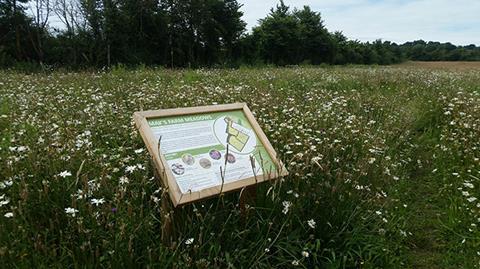A small mention in the housing white paper offered a tantalising opportunity to rejuvenate the natural environment in the green belt

One of the most vehemently debated elements of last month’s housing white paper occupied a remarkably low profile in the document itself.
Despite widespread speculation that the government was considering opening the door to a more pragmatic approach to development in the green belt, the government ultimately appeared to bow to political pressure and back down. Instead, protection is to remain much as it is - although local authorities were reminded that they have the power to remove protection when no other reasonable options remain.
Some might infer that this represents a victory for the environment and the enjoyment of recreational users of this space. But the fact is that much of the green belt isn’t that green. While it may serve to regulate the growth of our cities and prevent urban sprawl, from an ecological perspective its function is limited, and there are many areas with much greater ecological value that are not included within the Green Belt. Vast areas of the Green Belt consist of intensively managed farmland with little in the way of biodiversity or aesthetic appeal.
While the green belt may serve to regulate the growth of our cities and prevent urban sprawl, from an ecological perspective its function is limited
Sustainable development projects, based on the understanding that the needs of development and ecology need not be mutually exclusive, are now among the most effective means of funding nature conservation and biodiversity gains. In turn they add to local amenities that make homes and houses attractive to tenants and buyers, yielding benefits both for human health and for future stewardship of the environment.
One of the most interesting points in the housing white paper for ecologists proposes that if local authorities do approve selective development on green belt land, “contributions” could be collected from the developer to be spent on environmental improvements elsewhere in the green belt. A strategy such as this, woven into the fabric of a green belt review, offers tantalising potential to rejuvenate the natural environment within the green belt. Before this expectation can be met, however, a substantial amount of planning and consideration will be required on a local authority level.
Projects to deliver Suitable Alternative Natural Greenspace (SANG) alongside large-scale housing developments are already being realised across the UK, with proven ecological and commercial impacts. At EPR, we have recently been engaged by David Wilson Homes and the University of Reading to deliver two further SANG areas at the South of M4 Strategic Development Location (SDL).

The development area and nearby sites consist of residential parcels collectively comprising just over 2,500 new homes, alongside important community infrastructure and public transport improvements. Crucially, from an ecological perspective, the consented plans also include extensive areas of green space and four SANG areas covering over 40 hectares of land.
Two already-completed SANGs at Langley Mead and May’s Farm show how agricultural land with low ecological value can be enhanced to deliver an attractive and educational conservation environment for local people to visit and enjoy, as well as habitats for wild plants and animals.
These results are providing an early indication that the South of M4 SDL and other sustainable developments are places where both local species and local people want to live. The commercial opportunities this creates for the housebuilders are hard to ignore - but, importantly, the alignment of commercial and ecological objectives offers a way around the impasse that would otherwise continue to exacerbate the twin problems of biodiversity loss and housing shortages. We can and must tackle both.
Ben Kite, managing director, EPR



























No comments yet